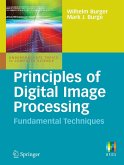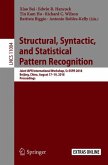This book is a detailed description of the basics of three-dimensional digital image processing. A 3D digital image (abbreviated as "3D image" below) is a digitalized representation of a 3D object or an entire 3D space, stored in a computer as a 3D array. Whereas normal digital image processing is concerned with screens that are a collection of square shapes called "pixels" and their corresponding density levels, the "image plane" in three dimensions is represented by a division into cubical graphical elements (called "voxels") that represent corresponding density levels. Inthecontextofimageprocessing,in manycases3Dimageprocessingwill refer to the input of multiple 2D images and performing processing in order to understand the 3D space (or "scene") that they depict. This is a result of research into how to use input from image sensors such as television cameras as a basis for learning about a 3D scene, thereby replicating the sense of vision for humans or intelligent robots, and this has been the central problem in image processing research since the 1970s. However, a completely di?erent type of image with its own new problems, the 3D digital image discussed in this book, rapidly took prominence in the 1980s, particularly in the ?eld of medical imaging. These were recordings of human bodies obtained through computed (or "computerized") tomography (CT),imagesthatrecordednotonlytheexternal,visiblesurfaceofthesubject but also, to some degree of resolution, its internal structure. This was a type of image that no one had experienced before.
From the reviews: "This book is a detailed description of the basics of 3-dimensional (3D) digital image processing, in particular the processing of images from techniques such as CT, MRI, and nuclear emission tomography. ... The targeted audience is primarily graduate students and scientists in biomedical engineering and medical physics. ... I would like to congratulate the authors for making available this book detailing the steps of filtering, processing, and rendering medical images." (Tinsu Pan, The Journal of Nuclear Medicine, June, 2010) "Fundamentals of Three-Dimensional Digital Image Processing ... is an informative thought-provoking publication that unveils some mysteries of computing 3D images that are contemporary used medicine industry. It presents insight not only into the data structures that are used in 3D imaging but also some most important algorithms for 3D image processing. ... The proposed graph-based data structure has excellent properties. ... My personal recommendation is that the book is worth reading and the reader gets insight in how it should be done professionally." (Cad Cam Development, March, 2011)








